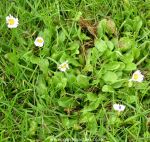Home
Categories
Calendars
Guides
- Help on the Allotment
- Greenhouse World
- The Perfect Lawn
- Water Garden Features
- Beginner's Corner
- Pest and Disease
- Garden Techniques
Reviews
Archive
Gallery
Articles
Ask Our Gardening Expert
Identify Garden Weeds By Pictures
Most garden weeds require the same simple treatment, hoeing and weeding.
But where a weed is proving troublesome in your garden you may want to identify it and make further investigations.
CLICK ANY PICTURE BELOW TO ENLARGE IT
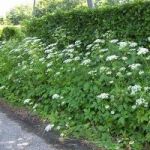 GROUND ELDER
GROUND ELDERAegopodium podagraria
Ground elder reaches a height of about 1m (3ft). It spreads very quickly if left to its own devices.
Easily identified by the characteristic white flowers.
Click the picture to enlarge.
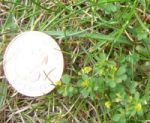 BLACK MEDICK
BLACK MEDICKMedicago lupulina
Black Medick is commonly found in lawns, especially short cut lawns. Good lawn culture should overcome this low creeping weed. Don't cut the lawn too close
Click the picture to enlarge (courtesy of Colin Philpott).
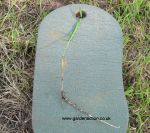 COUCH GRASS
COUCH GRASSElymus repens
Couch Grass is a persistent and invasive weed. Click here for our page on how to clear couch grass. Also known as "twitch".
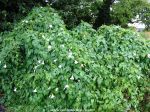 BINDWEED Convolvulus arvensis
BINDWEED Convolvulus arvensisBindweed and Bellbind are very similar in appearance and can be treated the same. Very invasive, they require persistent weeding to eradicate them. Their roots can go down 5m (16ft). Click here for a close up of the leaf and flower.
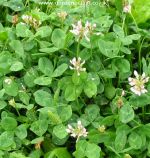 WHITE CLOVER
WHITE CLOVERTrifolium repens
White Clover is often found in cultivated grass. It spreads easily. Click the picture to enlarge it. Without resorting to a chemical weed killer, this weed is difficult to eradicate. Dig up each plant with the roots and as much of the runners as possible. Don't cut the lawn too close.
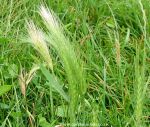 WALL BARLEY
WALL BARLEYHordeum murinum
Wall Barley is relatively easy to control. Simply cut is low so that no seeds fall on the soil. Existing seeds will only survive two years so the regular cutting this weed can be eradicated in two years. Click the picture to enlarge it.
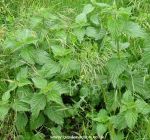 STINGING NETTLE
STINGING NETTLEUrtica dioica
Wait for a day when the soil is damp, equip yourself with a stout pair of gloves and pull each nettle up by gripping it near the base and gently ease it out of the soil with the roots.
Click the picture to enlarge it.
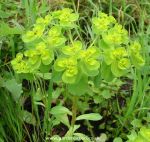 SUN SPURGE (aka Cat's Milk, Devil's Milk, Wartweed and
Turnsole)
SUN SPURGE (aka Cat's Milk, Devil's Milk, Wartweed and
Turnsole)Euphorbia helioscopia
Can irritate the skin, and if eaten will cause significant sickness. The seeds last for 8 years in the ground so don't let them et seed. The weed can be pulled up individually by hand.
Click the picture to enlarge it.
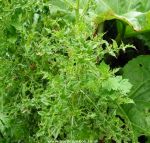 THISTLE
THISTLEThere are a wide varieties of thistles but they should be treated the same. Either hoe as soon as they are noticed or weed them individually when the soil is damp.
Click the picture to enlarge it.
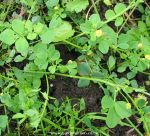 LESSER TREFOIL (aka Little Hop Clover or Yellow Suckling
Clover)
LESSER TREFOIL (aka Little Hop Clover or Yellow Suckling
Clover)Trifolium dubium
A difficult weed to eradicate, especially in lawns. It spreads by runners and seed. The seeds remain viable for 20 years. Hand weed, removing as much of the runners as possible.
Click the picture to enlarge it.
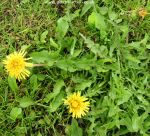 DANDELION
DANDELIONTaraxacum
With their long tap roots Dandelions are difficult to eradicate. On top of that the seeds remain viable for 15 years. Hand weed on a day when the soil is moist. Pull up as much of the root as possible.
Click the picture to enlarge it.
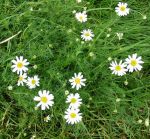 MAYWEED (aka Dog's Chamomile)
MAYWEED (aka Dog's Chamomile)Matricaria recutita
Mayweed is not particularly invasive so individual plants can be hand weeded when the soil is damp. Don't let it flower because the seeds stay viable for over 10 years in the soil.
Click the picture to enlarge it.

